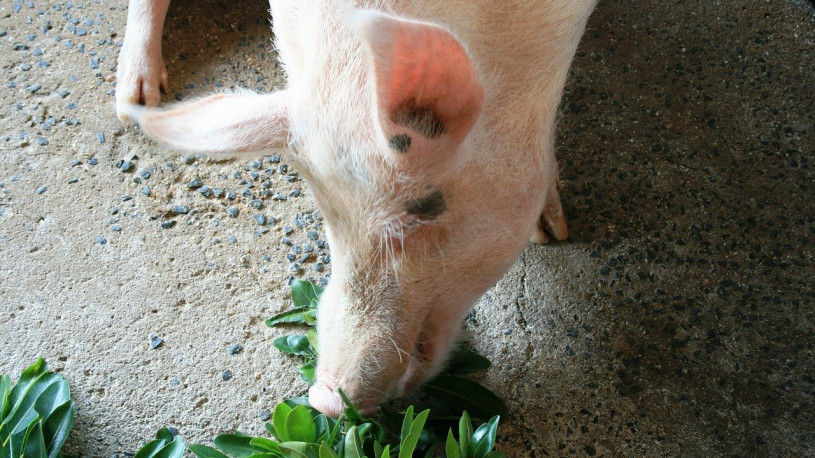-
Rock Phosphate Reserves, China and Agrichemical Prices
 Continue Reading
Continue ReadingThe supply of rock phosphate has not always been certain, and it is this risk that has led to market instability, price volatility and caution over fertilizer and animal feed production levels. A fact acknowledged by the EU, when it added rock phosphate to its list of ‘critical materials’, which currently includes only 20 global commodities.
Fortunately, the planet still has sufficient phosphate reserves to match current demand. A fact supported by Pedro Sanchez, director of the Agriculture and Food Security Center at the Earth Institute, who claims that, “Once every decade, in my long 50-year career, people say we are going to run out of phosphorus. Each time this is disproven. All the most reliable estimates show that we have enough phosphate rock resources to last between 300 and 400 more years.”
Similarly, a recent analysis published in the Yale University journal Yale Environment 360 confirms that, “The world is not about to run out of phosphate.” But it also continues, by warning that, “Demand is rising, most of the best reserves are gone, and those that remain are in just a handful of countries.” Adding that, “Dana Cordell of Linkoping University in Sweden, who runs an academic group called the Global Phosphorus Research Initiative, says we could hit ‘peak phosphorus’ production by around 2030.”
Worryingly, and accurately, the author concludes that, “Already, like other key commodities with once-dominant sources running low, the price of phosphate is starting to yo-yo alarmingly. But there are no new sources of phosphate. We continue to mine the rock — or we starve.”
But this begs the question, for such a necessary product, with ample reserves, where are phosphate prices heading?
A recent analysis of rock phostphate markets by Renee Cho of the Earth Institute at Columbia University, concluded that there were many problems for phosphate processors. These included, “… the decreasing quality of reserves, the growing global population, increased meat and dairy consumption (which require more fertilized grain for feed), wastage along the food chain, new technologies, deposit discoveries and improvements in agricultural efficiency and the recycling of phosphorus.”
Furthermore, she adds that, “climate change will affect the demand for phosphorus because agriculture will bear the brunt of changing weather patterns. Most experts agree, however, that the quality and accessibility of currently available phosphate rock reserves are declining, and the costs to mine, refine, store and transport them are rising.”
It is this last factor, transportation costs, that is seen by many as the tipping point in the rock phosphate market. An economic situation where unstable oil prices, coupled with unstable rock phosphate supplies may lead to a perfect storm in the market for vital fertilizer and animal feed products. A storm that may lead to price spikes similar to those of 2008.
The problem of transporting rock phosphate to animal feed markets is a point acknowledged in a recent report by the British parliament, which noted that, “In 2008, the price of phosphate rock increased by 800% in one year. Although the price fell sharply in late 2008, the phosphate rock price has still not returned to pre-event values. A combination of factors caused the prices to rise sharply in 2008, including elevated oil prices made it more expensive to move and process the rock.”
To avoid the challenges, and costs, of shipping phosphate supplies and agrichemical products around the world, many fertilizer and animal feed producers have looked to the emerging markets for expansion, and on many levels this makes sense. The classic example is China, which has both rock phosphate deposits, and a growing population, which is becoming more accustomed to the taste of meat.
This is a point raised by agricultural industry consultants, Agribusiness Intelligence, when they state that, “The use of phosphates plays an increasingly strategic and fast-growing role in animal feed and nutrition, particularly in China and other emerging markets, where meat and livestock consumption is rising on economic growth and demand from the middle classes.”
But this seemingly ideal situation has its own problems. There is a great deal of competition in the Far East, with Lomon, Chanhen, and SinoChem among the largest companies fighting for market share. While many new companies that hoped to expand dicalcium and monocalcium phosphate facilities are now struggling. Today, it is generally acknowledged that the market has over capacity.
There is also the added risk that the Chinese government might restrict the phosphate processing industry by putting political interests before business interests. An example of such action was when Beijing introduced a 135% export tax on fertilizer in order to protect domestic markets. This impacted global markets and helped fuel the 2008 rock phosphate price leap. Monocalcium phosphate manufacturers hoping to increase exports will prefer not to have such extreme interference from governments, and will look for more stable economies for expansion wherever possible.
Given that commodities markets are generally bearish for phosphate prices, it is little wonder that many Chinese phosphate processors are considering closing down, or are refocusing their sales solely on the predicted growth in Chinese agriculture. A point highlighted by the industry journal, Agrimoney when it noted the reductions in phosphate production on 7/2/2017, saying that, “Mosaic highlighted the ‘lower phosphate and potash prices’, which have forced the group, like many peers, into cutbacks.”
However, there is at least one producer of fertilizer and animal feed stock who is far more bullish about the future; PhosAgro. As Andrei Guryev, PhosAgro’s Chief Executive told CNBC on 27/1/2017, “We expect China’s inefficient plants to close. And because it will lead to certain shortages, their big enterprises will divert their deliveries towards the domestic market.”Adding that, “PhosAgro would develop its own distribution and trading in Europe and Latin America to further boost direct sales to clients from the current rate of 70%. As one of the lowest-cost producers in the world the company [PhosAgro] plans to keep increasing output beyond 2017 by 5-10% a year.”
This flies in the face of most opinion of a retraction in the markets, and so places the phosphate industry at somewhat of a crossroads. While some of the big players are making cutbacks, and commodity brokers are noting further price drops in fertilizer and animal feed stock raw materials, PhosAgro, one of the largest agrichemical producers in the world, is planning on growth and expansion. This is based on a calculated belief that dicalcium and monocalcium phosphate prices are to rise.
Only time will tell if the market is on the road to recovery. But given that food consumption is almost certain to grow, and that rock phosphate supplies seem generally stable for the foreseeable future, it may be that the rock phosphate processing industry is finally getting on an even keel.
Photo credit: LinkedIn
Photo credit: http://noozz.com
-
Monocalcium Phosphate Price Pressure and the Pull Towards Iberian Investment
 Continue Reading
Continue ReadingFor years, monocalcium phosphate manufacturers and traders have been struggling with an unsettled market, that has seen prices rise and fall quicker than a Moroccan miner’s, rock phosphate pick axe.
While global demand means that today’s phosphate extractors are more likely to operate a bucket crane and conveyor belt than a pick axe, it still leaves a lot of guesswork on prices for animal feed producers. Phosphate traders are particularly nervous of the current wave of Al Qaeda attacks in North West Africa, while the UK‘s Foreign Office advises, “against all travel” to parts of Western Sahara, and a “high threat from terrorism in Morocco.”
This is a point raised by the agricultural market analysts at Agribusiness Intelligence, when they state that, “A grand total of 82% of phosphate rock reserves are located in North Africa and the Middle East. The political instability in these regions could lead to disruption in the supply of rock phosphate in the short term and also in the future.” However, they continue, by adding that, “the inherent availability of rock phosphate is not an issue.”
Perhaps more worrying though, for animal feed suppliers and farmers is that the analysts also state, “As there is a predicted expansion in demands for phosphate an important question is whether [problems of supply] accompanied by a ‘peak phosphorus’ event, might occur any time soon.”
Given the strategic importance of rock phosphate, it is unlikely that the G8 would allow ISIS to overthrow the Kingdom of Morocco anytime soon. But there are many other factors for MCP manufacturers to consider when setting their animal feed additive prices.
Naturally, production levels of poultry, pork, beef, milk and eggs, play a significant part in determining phosphate additive prices. Many have noted the growth in meat consumption in the Far East and developing world. For example, the USDA reports that, “China is exhibiting the largest increase in meat consumption at 10.1 million tons by 2025/26, followed by India at 4 million tons.”
This growth is commonly attributed to a richer developing world, as a recent report by business consultants IHS, explains, “Calcium phosphate consumption has been growing in developing countries in part as a result of increased disposable income [leading to] increased consumption of meat.”
This in turn, has led to many animal feed manufacturers to focus on these regions for their growth. China and Brazil, for example make up the heart of feed phosphate production. A fact supported by data from PotashCorp, which states that, “China is the world’s largest producer of feed phosphates accounting for approximately 39% of global production. The US and Brazil follow with approximately 14% and 9% of global production respectively.” This is due in large part to China being, “…the largest consumer of feed phosphates, accounting for 36% of global consumption. North America and South America consume 12% and 15% of global feed phosphate respectively.”
However, while the growing meat markets in China and India are great news for rock phosphate traders, it is Europe’s meat consumption decline that has some animal feed manufacturers worrying. According to IHS, Europe accounts for 26% of the MCP global market, so any fall in meat consumption there is likely to play badly for animal feed manufacturers.
So why then is Phosagro, “one of the world’s leading producers of phosphate-based fertilisers”, whose “core line of business” includes “high-grade phosphate rock (P2O5>35.7%), and also feed phosphates”, be interested in expanding anywhere in Europe?
The reason is that some parts of the continent are showing signs of growing animal feed markets that are bucking other regional trends. For example, Spanish and Portuguese livestock farming is an expanding business, and that can only mean good news for MCP manufacturers located on the Iberian Peninsula.
As a USDA report from October 2016 states, “Spain’s cattle and beef production in 2015 shows a rebound in production after several years following a downward trend. It is mainly due to the strong demand of live animals from third countries such as Lebanon, Libya and Algeria, reasonable feed costs and better profitability margins. Spanish beef exports also experienced strong growth due to competitive prices.”
But the expansion is not only in cattle farming, for as the industry journal Pig Progress explains, “Spain has overtaken Germany as the country with the largest pig herd in the European Union (EU). The Spanish pig sector has grown strongly over the last few years and for now there is no end to this growth.”
While the article continues to state that, “Despite Spain having the most pigs, Germany is the country producing the most pigmeat.” It also gives a reason for the differing figures, explaining that, “Germany’s carcass weight is a lot higher than Spain’s.”
With so many pigs producing much less bacon than other producers, there is a clear demand for animal feed nutrients to increase pork production and profitability.
But there is another reason for Phosagro’s interest in expansion, and that is the belief that phosphate prices are about to increase.
“I believe the [phosphate] market is in the process of bottoming out,” said Phosagro Chief executive Andrey Guryev when explaining the company’s position to the industry journal Agropages. “We might see production curtailments, especially in phosphates, relatively soon and in turn that should drive prices higher.”
With much of the data and analysis pointing to an up-swing in monocalcium phosphate prices, insight like that, from the head of one of the top agrichemical companies in the world, needs to be taken seriously. In fact, shouldn’t Guryev’s opinion, coupled with a growing livestock herd in a mature Iberian market, make every animal feed supplier look to Spain and Portugal for growth?
Photo credit: Eurostat/localfocus
Photo credit: http://www.themeatsite.com/
-
Using Computer Games to Teach Chemical Engineering
 Continue Reading
Continue ReadingA team of chemists and pedagogists from the University of Texas in Dallas are exploring the idea of using the computer game Minecraft as a means to teach chemistry. By doing so, it is hoped that they may also broaden people’s understanding of the chemical industry and the benefits that it brings.
By using the games interactive and problem solving features to set a chemical engineering based challenge, the programmers were able to connect with players in an entertaining way, while also educating them on chemical processes and how chemicals are used to make everyday products.
As the report, published in the journal Nature Chemistry, says, “Imagine a class without lessons, tests and homework, but with missions, quests and teamwork. Video games offer an attractive educational platform because they are designed to be fun and engaging, as opposed to traditional approaches to teaching through lectures and assignments.”
The team, led by Dr. Walter Voit of the Erik Jonsson School of Engineering and Computer Science, created a ‘mod’ for the game (much as many other Minecraft gamers do), but based the challenges in the game on understanding chemical processes, compounds and elements. This resulted in the development of ‘Polycraft World’, where players must meet goals such as building a pogo stick, by first harvesting and then processing rubber. Or by converting crude oil into jetpack fuel using distillation, chemical synthesis and manufacturing processes. Players are guided by instructions built into the mod, as well as a Wiki Website which advises players on the chemistry and chemical applications needed.
While players are free to return to the Wiki website for advice whenever they need it, experiments showed that players naturally retained information about manufacturing and chemistry simply through game play.
The real challenge in designing the game was in setting the difficulty level correctly. Particularly as the experiments game time lasted for only one hour a week. As Voit said, “If the game is too difficult, people will get frustrated. If it’s too easy, they lose interest. If it’s just right; it’s addicting, it’s engaging, it’s compelling.”
But it seems that the researchers have the level correct, as Dr. Ron Smaldone, an assistant professor of chemistry, who joined the project to give the mod its accuracy as a chemistry teaching tool, tells the University of Texas website, “The demands of the one-hour-a-week class were limited, yet some students went all-out, consuming all this content we put in.”
As Voit explains, “Our goal was to demonstrate the various advantages of presenting educational content in a gaming format.” Adding that, “An immersive, cooperative experience like that of ‘Polycraft World’ may represent the future of education.”
You can find out more about Polycraft World, including the weekly ‘Polycrafter of the Week’ contest, on this YouTube channel.
Meanwhile, the online journal ScienceDaily reports how, “Dr. Christina Thompson, a chemistry lecturer, supervised the course in which the research was conducted, and joined Smaldone in mapping out assembly instructions for increasingly complex compounds. Voit spearheaded a team of programmers that spent a full year on development of the platform. Thompson and Smaldone produced more than 2,000 methods for building more than 100 different polymers from thousands of available chemicals.”
“We’re taking skills ‘Minecraft’ gamers already have — building and assembling things — and applying them to scientific principles we’ve programmed,” Smaldone said. “We’ve had complete non-chemists build factories to build polyether ether ketones, which are crazy hard to synthesize.”
On an educational level, the new method is even more appealing, as it enables teachers to easily understand how much information the students have retained. A point that Smaldone highlights when he said, “With traditional teaching methods, I’d walk into a room of several hundred people, and walk out with the same knowledge of their learning methods. With our method, it’s not just the students learning — it’s the teachers as well, monitoring these player interactions. Even in chemistry, this is a big innovation. Watching how they fail to solve a problem can guide you in how to teach better.”
Voit adds to this, saying, “We can measure what each player is doing at every time, how long it takes them to mix chemicals, if they’re tabbing back and forth to our Wiki, and so on. It gives us all this extra information about how people learn. We can use that to improve teaching.”
Whilst the goal of finding out if a computer game can teach chemistry has obviously been met, the research goes far beyond that. As Voit makes clear, “There’s a preconception among some that video games are an inherent evil. Yet in a rudimentary form, we’ve made a group of non-chemistry students mildly proficient in understanding polymer chemistry. I have no doubt that if you scaled that up to more students, it would still work.”
It is hoped that the mod will prove popular, and other variations of its type will be made. If so, then maybe people’s knowledge of the positive side of chemicals will also improve. Given that chemistry is so little understood and the chemical industry as a whole is greatly misunderstood, then perhaps we should all be adding this game to the Christmas list of those we know and love. Or would you rather play it yourself?
Photo credit: University of Texas in Dallas
